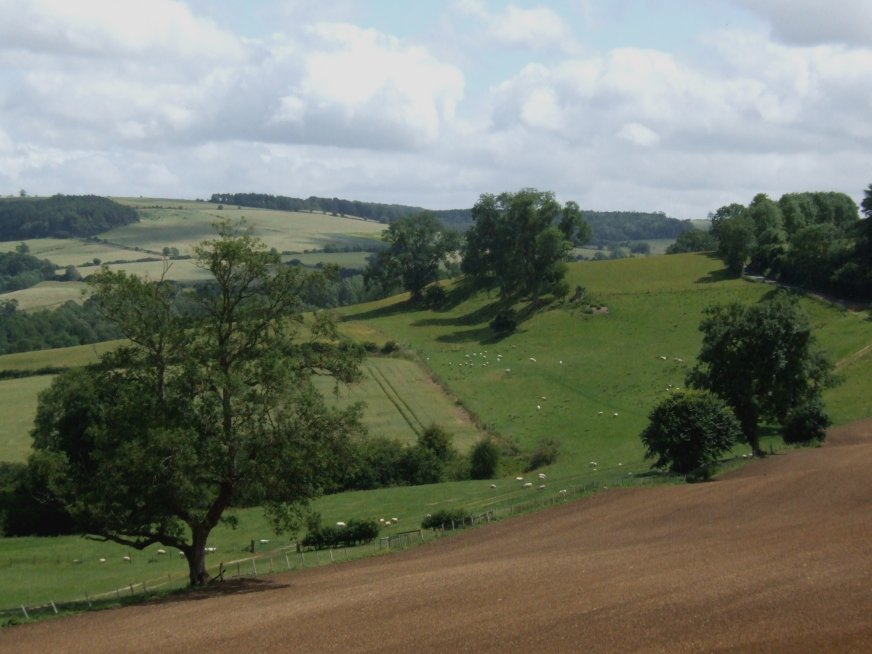If you’re involved in agriculture, the planning system allows you to do quite a lot without planning permission, or you may need only to notify a proposal, rather than make a full application for planning permission.
The legal position does vary a little across the UK, so this is only a general outline of the provisions. If you’re in any doubt, you should always check with your local planning authority.
Download your planning maps here
1. First of all, what do we mean by ‘agriculture’? Well, it includes the growing of crops, including cereals, fruit and vegetables. It also includes the keeping and breeding of livestock for the production of food, wool, skins or fur. Market gardens and plant nurseries are included too, and so are woodlands, but only if that use is ancillary to agricultural use – for example, a shelter belt.
The planning system regulates ‘development’, which includes (among other things) building, mining, or engineering operations and changes of use where they are ‘material’ – which means significant in planning terms. Some development – on farms and in many other settings - is automatically permitted by the planning rules, for example, some smaller house extensions, whereas the rest needs to be approved by the planning authority.

The first thing to note is that agricultural operations are not classed as development at all. In other words, you don’t need permission to plough your land, dig drainage ditches, plant a hedgerow or create a shelter belt. Nor does ‘development’ include the use of an existing building on agricultural land for agricultural purposes.
However, a farmer may want to do things that are counted as ‘development’. But that doesn’t mean that you’ll always need to apply for planning permission. The kinds of development that farming involves fall into three broad categories.
Firstly, there is what’s known as ‘permitted development’. This covers many minor building operations, including many fences and walls, smaller sheds and so on. It may be subject to certain conditions, for example concerning the building’s external appearance. It’s very important to note, though, that the extent to which you can benefit from permitted development may depend on the size of the holding or of individual parcels within it. In England and Wales, a unit of less than 0.4 hectare doesn’t benefit from any but the most basic permitted development rights. However, as the size of the holding increases to 1 hectare and then to 5 hectares, the range of permitted development rights increases.
You also need to bear in mind that, at the most basic level, the development for which you’re claiming agricultural permitted development rights has to be ‘reasonably necessary’ for the purposes of agriculture. If the planning authority considers that what you propose isn’t ‘reasonably necessary', they will ask you to apply for planning permission. The rules really are complicated, so do check with the planning authority.

2. The second category of development doesn’t normally require a full-blown planning application, because it’s still a form of permitted development. However, you will need to notify the planning authority and allow them time to decide whether they want you to make a full application. This is known as ‘Prior Notification’. This category of development includes such things as larger buildings, the deposit of waste, or certain excavations.
Then there are those developments that don’t benefit from permitted development rights at all. Whether planning permission is needed also depends on such things as proximity to roads or houses. The construction of a house, whether or not it’s needed to house a farm family, always needs planning permission. Planning authorities have, over the years, taken action where alleged new barns were found to have picture windows and kitchen units, or where an illicit house was surrounded by straw bales see the case here.
You’ll see from this it really is essential to check out what you want to do with the planning authority. Not only are the basic rules complex, but there may be local restrictions on development, too, and of course farmers are not exempt from the rules that apply to Listed Buildings, Sites of Special Scientific Interest and so on.
3. If you need to submit a Prior Notification or a Planning Application, it’s absolutely vital that you submit proper planning maps with your application. You’ll need a location plan, which in a rural area could be at 1/2500 scale, and you will probably also need a block (or site) plan at a larger scale such as 1/500 or 1/200. What the planning authority expects are planning maps on a nice, clear, up to date Ordnance Survey base. Submitting anything else is likely to lead to confusion and delay, and the savings (if any) are likely to prove a false economy.
There’s more about planning permission as it relates to farms on the gov.co.uk website, with links to more detailed information than we can provide here.
The new rules also allow existing redundant agricultural buildings of 500 sq m or less to change to use within either Class A1 shops, Class A2 financial and professional services, Class A3 restaurants and cafes, Class B1 businesses, Class B8 storage and distribution, Class C1 hotels or Class D2 assembly and leisure. If there is a change of use of an agricultural building in reliance on this rule it shall be treated as having a sui generis use. The new rules do not allow the conversion of agricultural buildings to residential use without the prior grant of planning permission.